Specialized’s Turbo Levo SL II is the brand’s lightweight trail-focused electric mountain bike that has received a significant update.
The update shifts the intentions of the Levo SL II from dedicated trail bike to one with potentially way more oomph, now replicating the extensive geometry adjustments found on the incredible Stumpjumper Evo.
This boosts the Levo SL II’s operating window, where it’s comfortable as a trail bike or enduro track slayer.
Along with geometry adjustment, the 2023 model boasts 150mm of rear-wheel travel and 160mm front. However, gone is the sidearm strut usually synonymous with Specialized’s trail bikes.
Fitted with mixed wheels (29in front, 27.5in rear) from the factory, the Levo SL II is also compatible with a full 29in setup thanks to a flip chip.
The new Turbo SL 1.2 electric bike motor increases power, now boasting 320W and 50Nm of torque, but it retains the 320Wh battery pack.
At launch, only S-Works (tested), Pro Carbon and Comp Carbon models are available, costing £13,000, £10,250 and £7,000 respectively. Looking at Specialized’s range of bikes, it would be fair to expect more affordable Levo SL IIs to be available in the future.
Specialized S-Works Turbo Levo SL II frame, suspension and motor

The Turbo Levo SL II’s carbon frame is built from Fact 11M carbon. Machine learning and Finite Element Analysis (FEA) have been used to influence the frame’s shape and how much material to use, and where.
Featuring its Rider-First Engineered concept, Specialized claims the front and rear triangles, and carbon linkage are tuned together. Each size’s feel should be catered to its intended rider’s size, providing similar on-trail experiences.
Boldly, the Levo SL II forgoes the sidearm strut seen on Specialized’s other mountain bikes. Less surprisingly, there’s little mention of its removal in Specialized’s marketing material. The brand told us it was removed to save weight as the frames have grown larger. Stiffness, however, is similar to the old bike.
Internally routed cables enter via ports on the down tube, making adjustments to bar height simple. There are bottle cage mounts inside the front triangle and it runs SRAM’s Universal Derailleur Hanger. Extensive chain-slap protection features on the chainstay.
Suspension
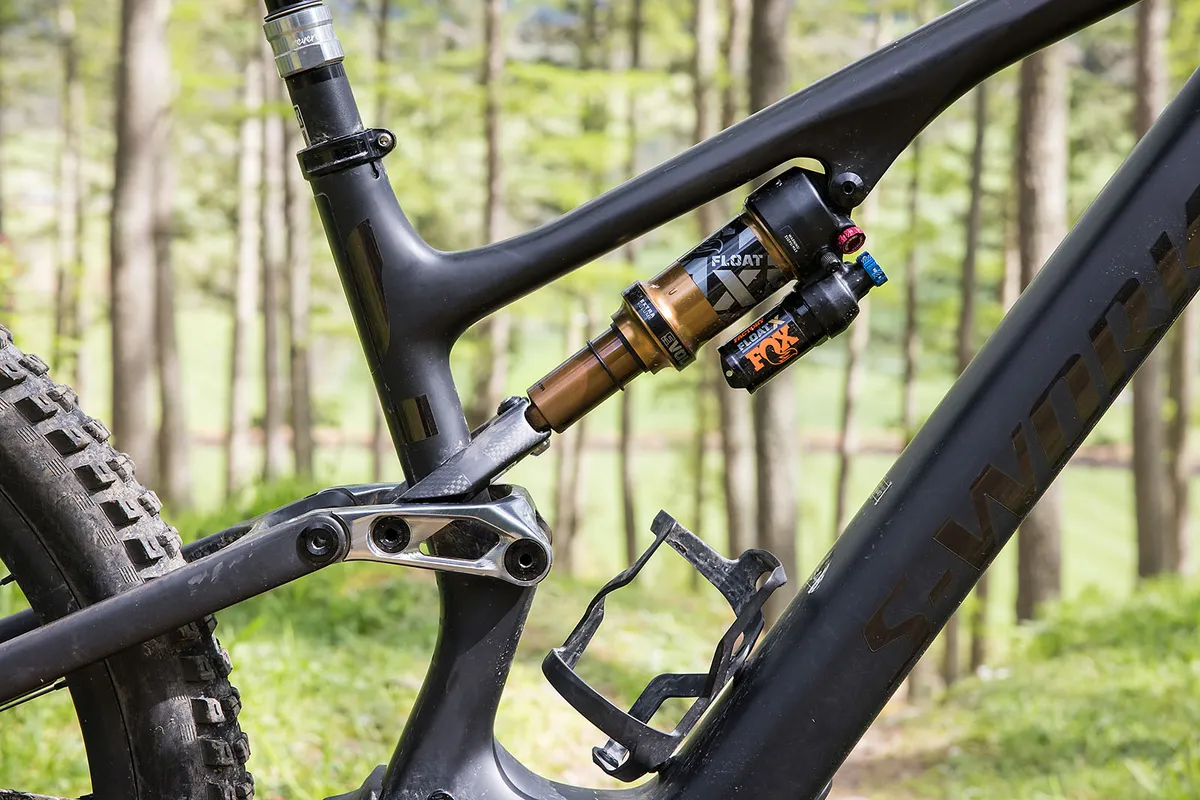
Sporting 150mm of rear-wheel travel, the Levo SL II uses Specialized’s Horst-link FSR suspension with a redesigned leverage rate.
This flattens and lowers the leverage rate to improve small-bump efficiency and mid-stroke sensitivity. Towards bottom-out, the kinematics create more progression, stiffening the rear end up.
The rear shock has been custom tuned to match the leverage rate. Its compression damping helps with bottom-out resistance, while remaining supple for smaller hits. Specialized has also reduced the rebound damping, helping the shock to recover quicker.
Motor and battery
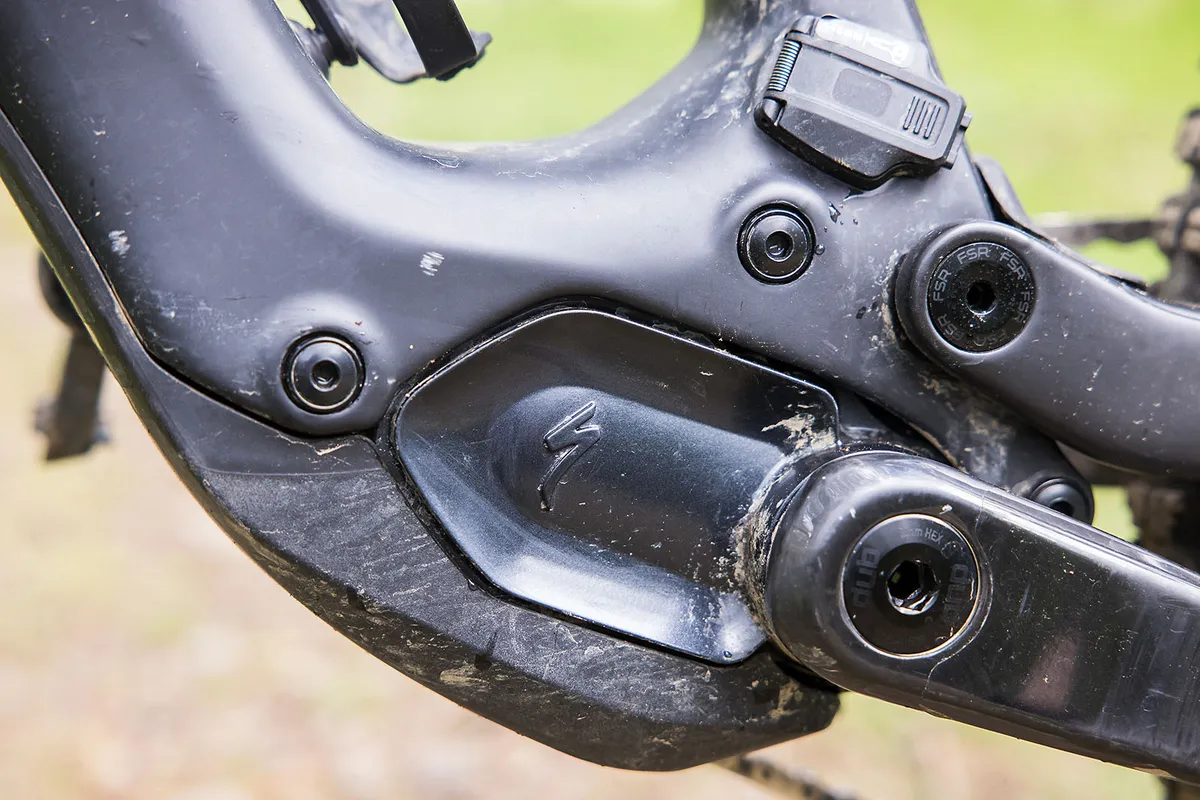
The new Turbo SL 1.2 motor has 50Nm of torque and 320W of power, up from the old model’s 35Nm and 240W.
The 320Wh battery capacity is unchanged, and the new bike is compatible with a 160Wh range extender.
Specialized’s MasterMind TCU display features. This is customisable via the Mission Control smartphone app, and, when connected to the app, functionality is increased.
Featuring three standard riding modes (Eco, Trail, Turbo), the MasterMind TCU also has MicroTune, where assistance is altered in 10 per cent increments.
Specialized S-Works Turbo Levo SL II geometry
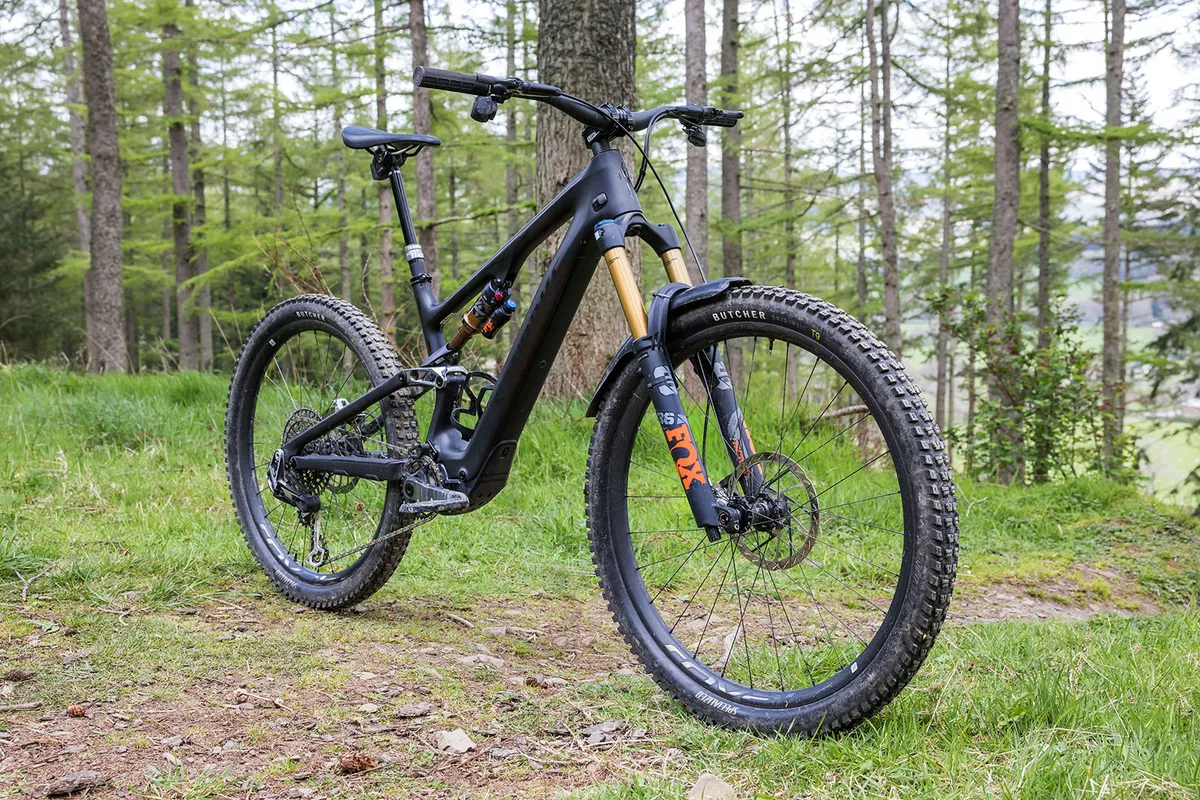
The Levo SL II now uses Specialized’s S-Sizing. Reach figures grow, but seat tube lengths and standover heights remain relatively static across the sizes. This means riders of any height can size up or down, depending on how they want their bike to ride.
Mimicking the massively adaptable geometry of the Stumpjumper Evo, the Levo SL II offers three points of adjustment.
Angle-adjusting headset cups create three head angle settings. Although the exact angle is dependent on the position and combination of other geometry settings (high/low bottom bracket, short/long chainstay), generally the bike can be adjusted between 65.8 degrees (steep), 64.8 degrees (nominal) and 63.8 degrees (slack).
| | S1 | S2 | S3 | S4 | S5 | S6 |
|---|---|---|---|---|---|---|
| Seat angle (degrees) | 75.8 | 75.8 | 75.8 | 75.8 | 75.8 | 75.8 |
| Head angle (degrees) | 64.5 | 64.5 | 64.5 | 64.5 | 64.5 | 64.5 |
| Chainstay (mm) | 433 | 432 | 432 | 432 | 432 | 432 |
| Seat tube (mm) | 385 | 385 | 405 | 425 | 445 | 465 |
| Top tube (mm) | 560 | 582 | 604 | 631 | 659 | 691 |
| Bottom bracket drop (mm) | 34 | 29 | 29 | 29 | 29 | 29 |
| Wheelbase (mm) | 1,158 | 1,184 | 1,208 | 1,238 | 1,267 | 1,301 |
| Standover (mm) | 727 | 763 | 766 | 767 | 773 | 778 |
| Stack (mm) | 609 | 617 | 626 | 635 | 645 | 654 |
| Reach (mm) | 405 | 425 | 445 | 470 | 495 | 525 |
An offset bushing on the shock eyelet raises or lowers bottom bracket height by 5mm.
A flip chip at the Horst-link pivot enables you to swap between a 27.5in and 29in rear wheel, which also changes chainstay lengths from 432.5mm (27.5in) to 442.5mm (29in).
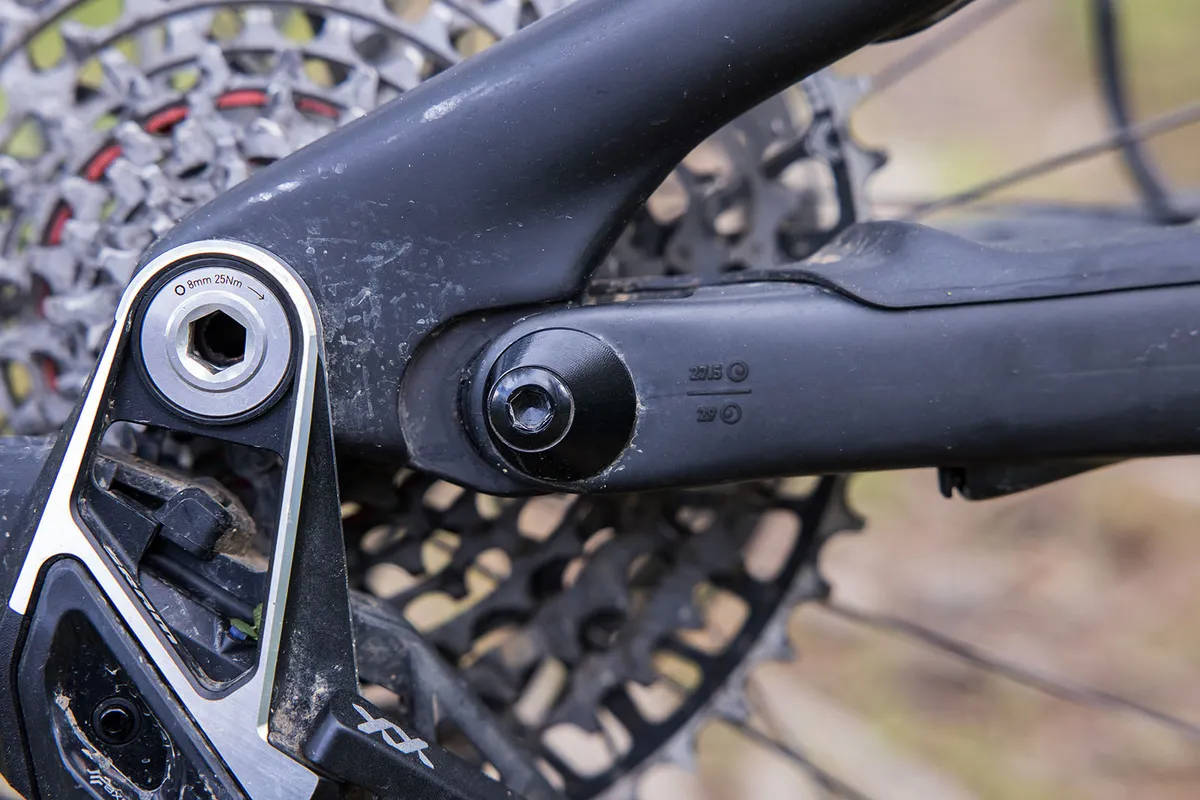
Elsewhere, geometry figures are close to the Stumpy Evo. Its reach ranges from 405mm to 525mm, with an S4 (tested) boasting a 470mm figure. The effective seat tube angle is around 76 degrees (depending on geometry settings) across the sizes, while top tubes range from 560mm up to 691mm.
Thanks to multiple setup options, the Levo SL II’s geometry can be pushed into enduro bike territory or reined in to resemble the outgoing Levo SL’s sweet-spot trail bike figures.
Specialized S-Works Turbo Levo SL II specifications
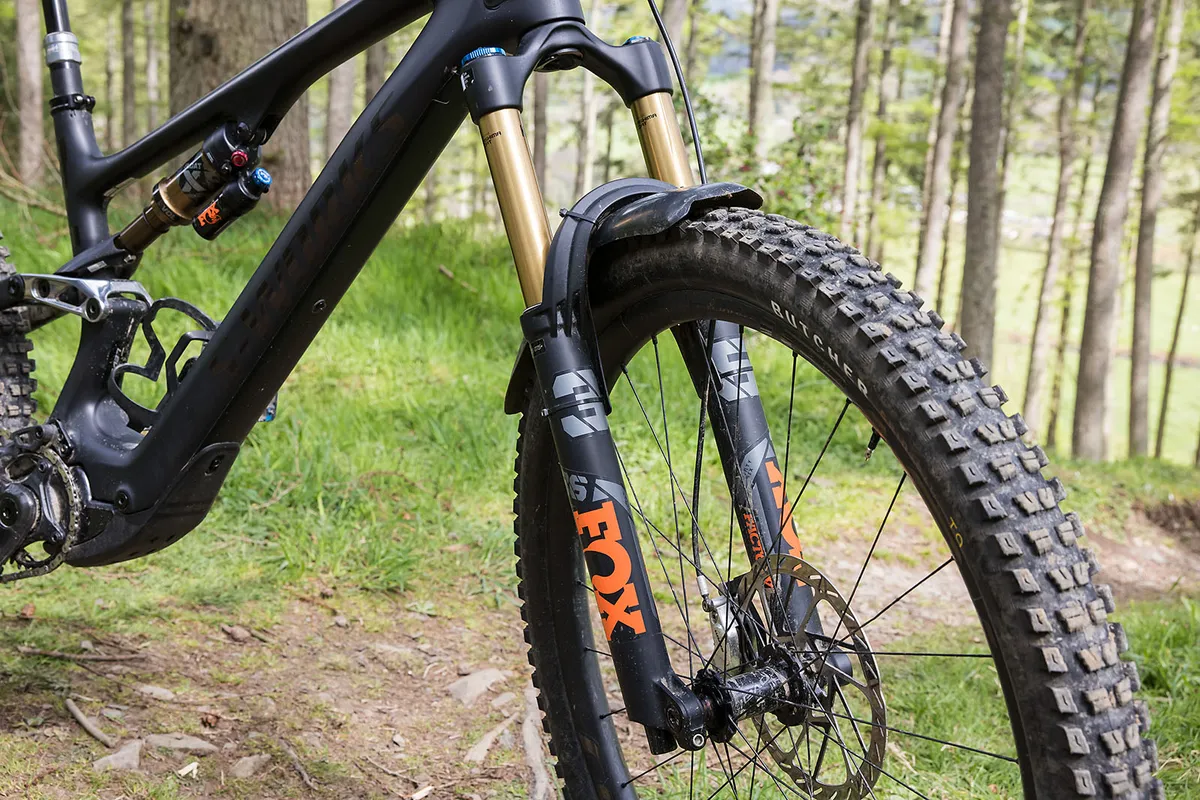
This S-Works version is decked out in top-spec kit befitting of its £13,000 price.
Up-front is Fox’s Factory 36 fork matched with a Float X factory rear shock.
SRAM’s Code Ultimate Stealth brakes are fitted with 200mm rotors front and rear. Also fitted is SRAM’s latest XX Eagle Transmission and Reverb AXS dropper post with 170mm of travel.
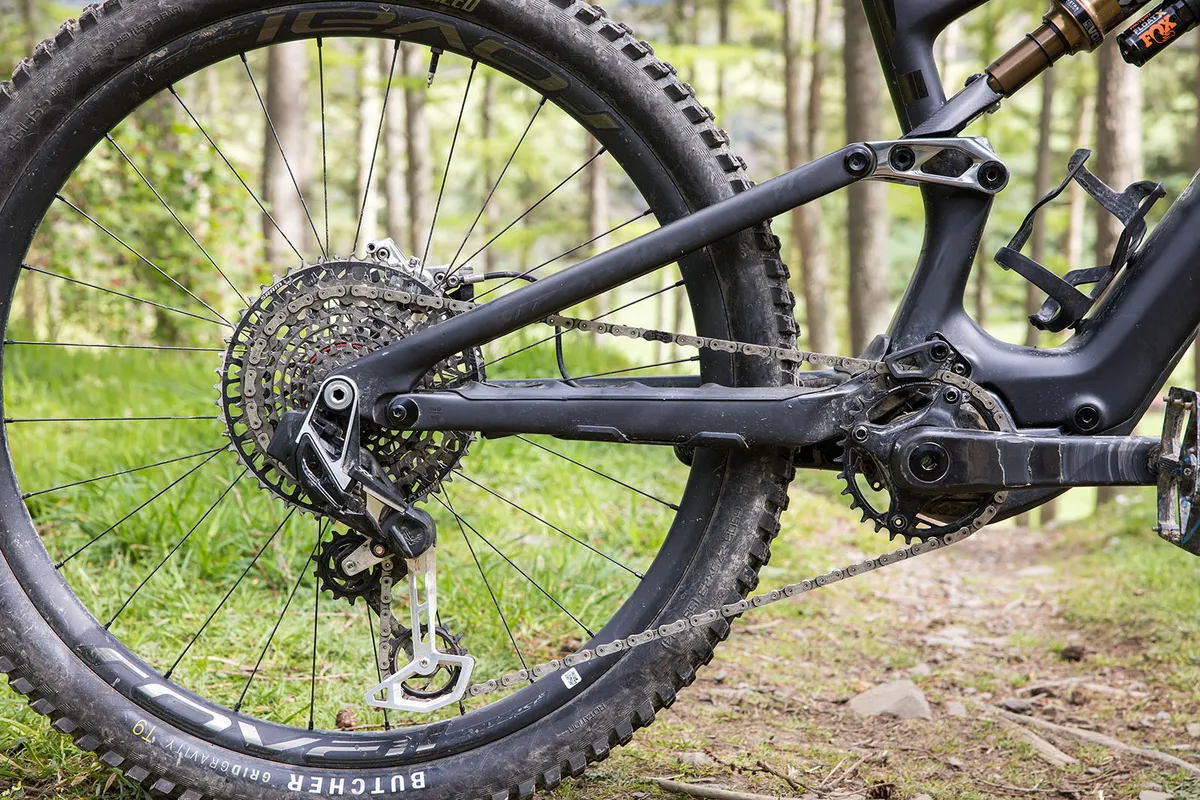
Specialized brand Roval supplies the SL carbon fibre rims on Roval hubs with DT Swiss Star Ratchet hubs. These are wrapped in Specialized’s own-brand tyres, with a Butcher GRID Trail casing T9 compound front tyre and an Eliminator GRID Trail casing T7 compound rear.
It’s fitted with Roval Traverse SL handlebars, a Specialized Bridge saddle and a Deity stem and grips.
This size-four test bike without pedals weighs 17.69kg.
Specialized S-Works Turbo Levo SL II ride impressions
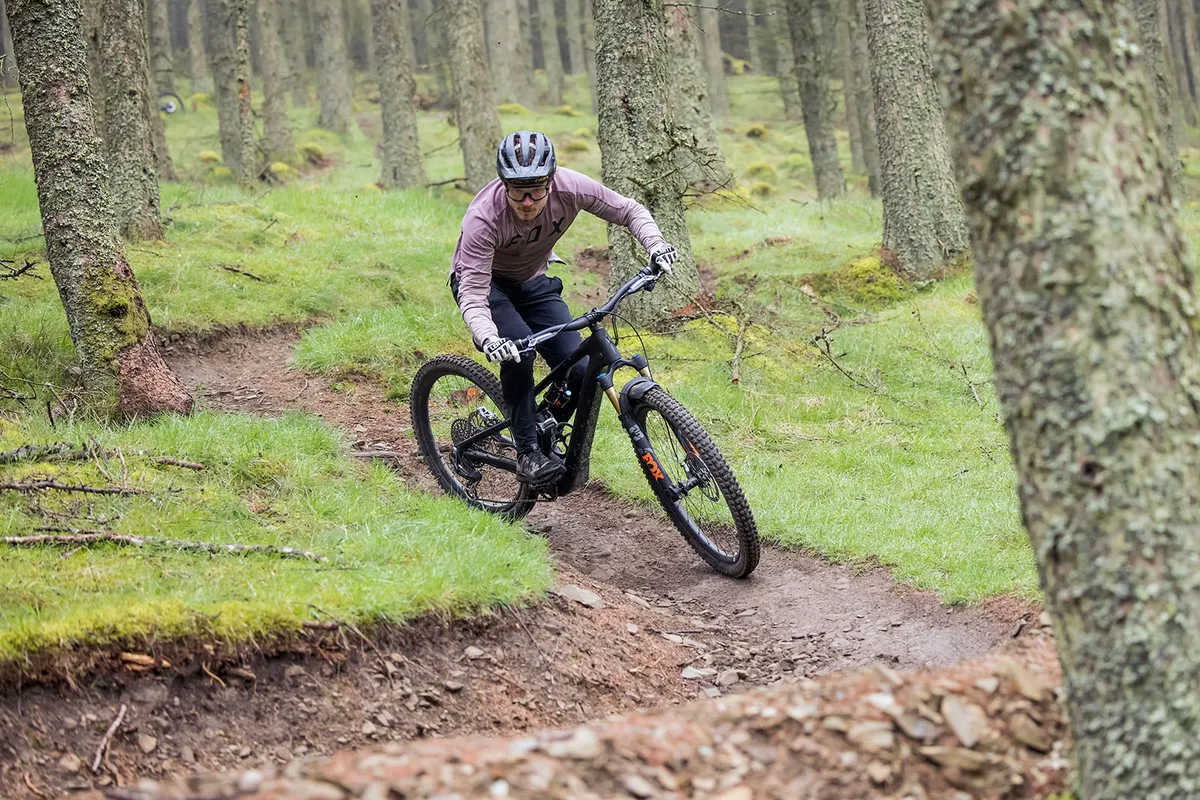
I tested the Specialized S-Works Turbo Levo SL II on a wide variety of terrain types in Scotland’s Tweed Valley, home to the UK’s round of the enduro world cup and 2023 XC and Marathon World Championships.
Conditions ranged from very wet through to springtime dust, giving the bike a thorough workout.
Setup
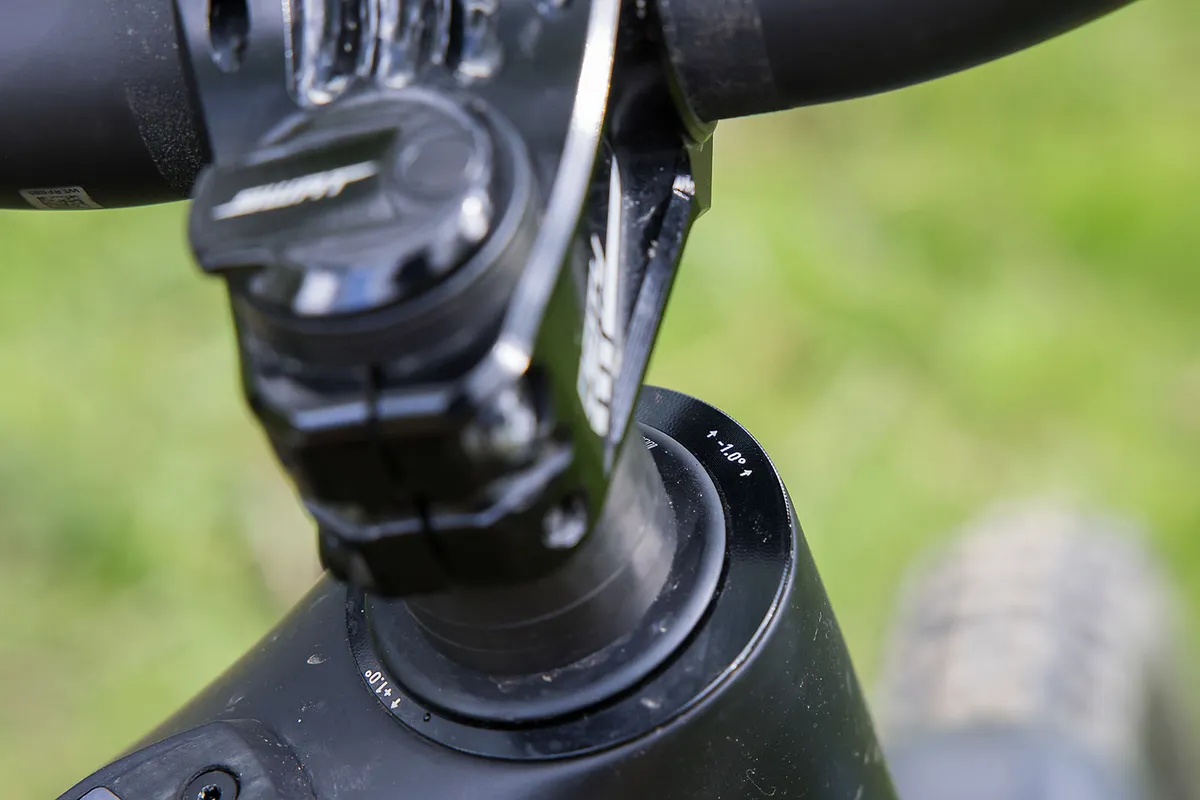
For my 76kg kitted-up weight, I set the Levo SL II’s fork to 98psi, and installed three volume-reducer spacers, taking the total to four. This gave me roughly 20 per cent sag. I opened all the external compression and rebound-damping adjustments.
I inflated the rear shock’s spring to 225psi and left the stock yellow volume-reducer spacer installed. With 24.5 per cent sag, it seemed a little hard in the car park, but my experience with Specialized’s bikes (Turbo Levo x3, Stumpjumper and Stumpjumper Evo) has taught me a sportier setup is frequently better.
After trying the bike in all its geometry configurations, with the stock 27.5in wheel and the optional 29in wheel set up with their associated chainstay positions, I preferred the 27.5in mullet setup, but with the bike in its long chainstay configuration.
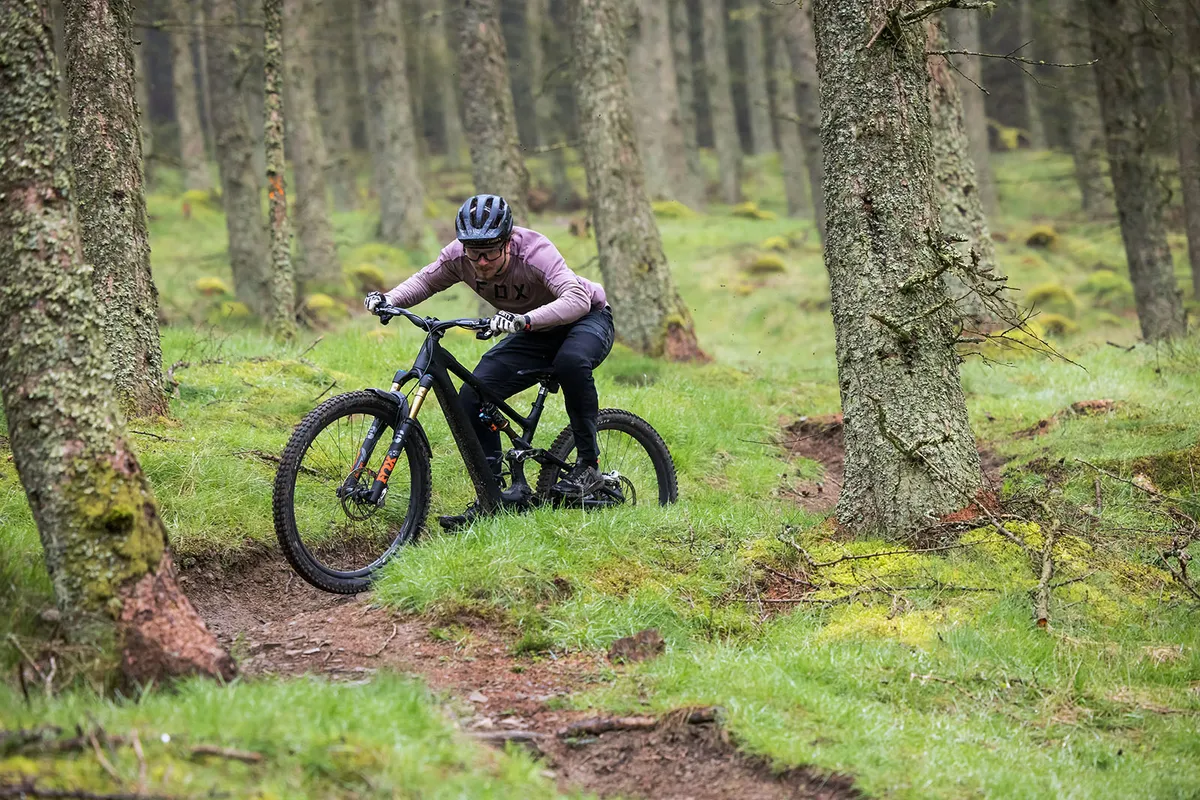
Although Specialized doesn’t officially recommend it, I found running the 27.5in wheel with the chainstay set to the 29in wheel position had no detrimental effects. This, in fact, improved its geometry and downhill performance thanks to a longer chainstay and lower bottom bracket.
With the -1 degree head angle cup, the bottom bracket set to its low position and chainstay in its longest, but with the 27.5in back wheel installed, the bike had a 63.85-degree head angle and 328mm bottom bracket height.
Specialized S-Works Turbo Levo SL II climbing performance
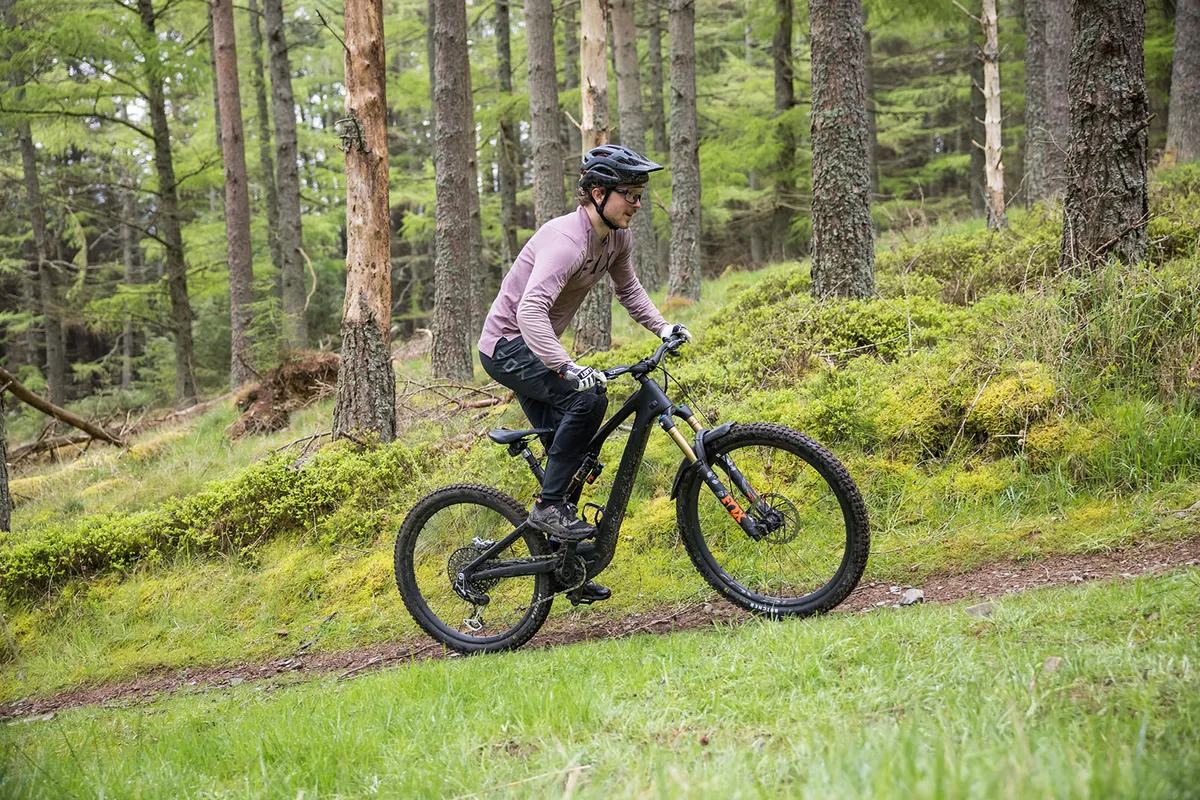
The Levo SL II has the same familiar and balanced feel as the Specialized Stumpy Evo.
On paper, the seat tube angle looks slack, however out on the trail your feet don’t feel as far in front of your hips as the geometry charts suggest.
Overall, it feels very neutral and balanced.
Its supportive and taut-feeling rear suspension helps; the low sag figure keeps the rear end propped up on steeper gradients as your weight cants rearward.
Its 631mm top tube feels neither too long nor short, balancing your weight evenly between the handlebars and saddle. With my preferred geometry settings, its feel straddles the trail bike and enduro bike segments.
With a few setup tweaks, such as raising the bars and changing the seat’s angle, a more upright enduro-style seated position can be dialled. Lowering the bars and flattening the saddle flips its bias to trail.
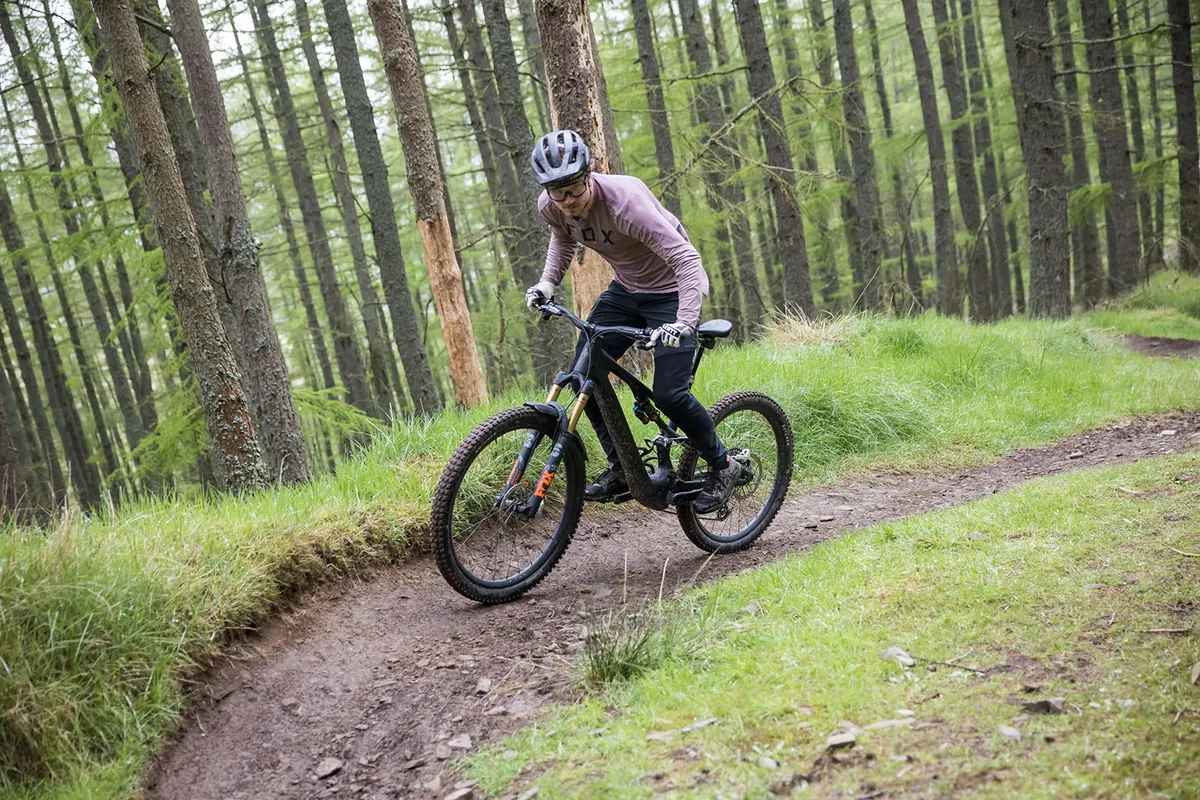
Combined with extensive geometry adjustments, it’s an impressive jack of all trades with an adaptable setup that’ll suit different riders’ needs.
Although taut, the suspension provides comfort on rough, high-frequency, low-amplitude bumps such as worn trail centre surfaces. This keeps fatigue to a minimum, but also provides plenty of grip.
Controlling front-wheel lift on steep sections is easy despite the short chainstay figure suggesting otherwise. Although weight shifts were needed to keep the front from lifting or rear from spinning, these were minimal.
SRAM’s XX Eagle Transmission works impressively on an electric mountain bike; the faultlessly smooth and quiet shifting I was so impressed by is only amplified with the motor’s extra power.
Motor performance and battery life
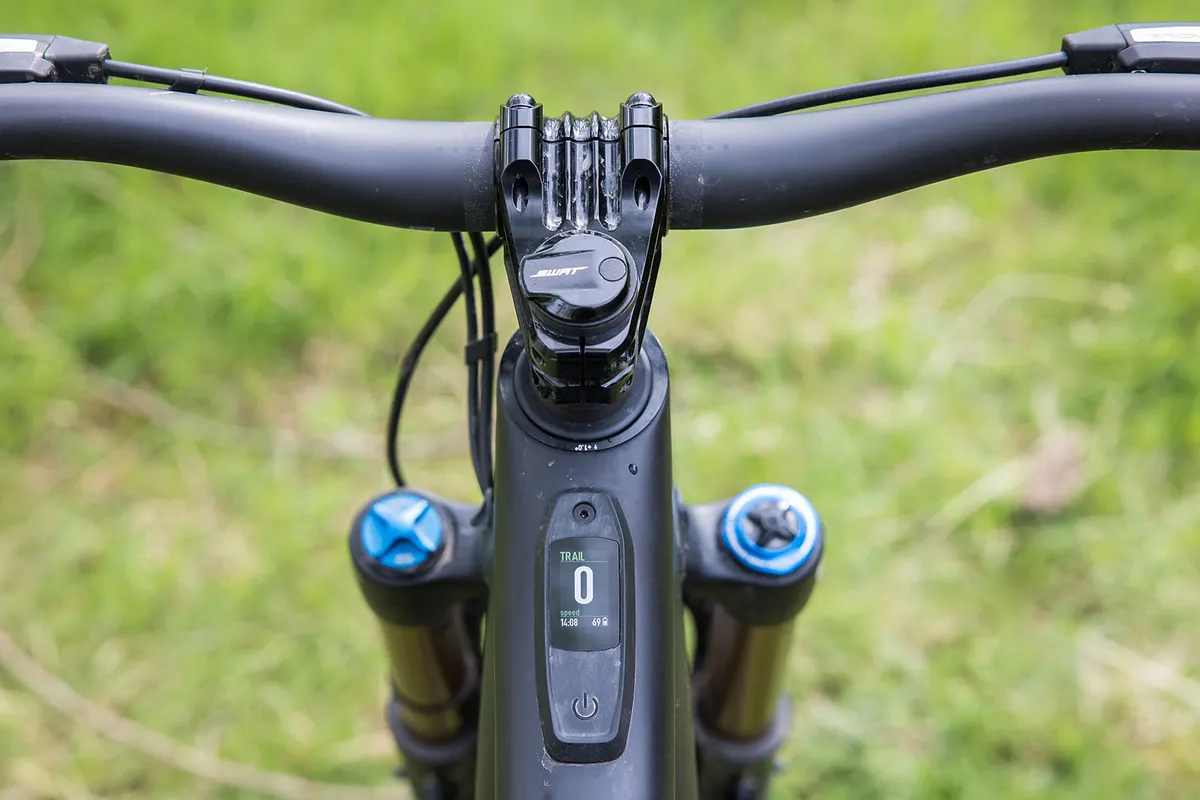
The Turbo SL 1.2 motor is quieter in all its assistance modes than the 1.1 motor.
Compared to Fazua’s Ride 60, it’s louder, and is marginally noisier than Forestal’s Bafang-built EonDrive.
In the factory-set assistance settings, the SL 1.2 is considerably more powerful than the older 1.1 drive unit it replaces. Compared to Fazua’s Breeze, Eco mode is quite a bit punchier, but against the EonDrive’s Eco, it’s less powerful.
The SL 1.2’s three assistance settings offer a great balance of power and battery life, but the MicroTune function expands on that. Adjusting its output in 10 per cent increments helps with juggling battery life and assistance.
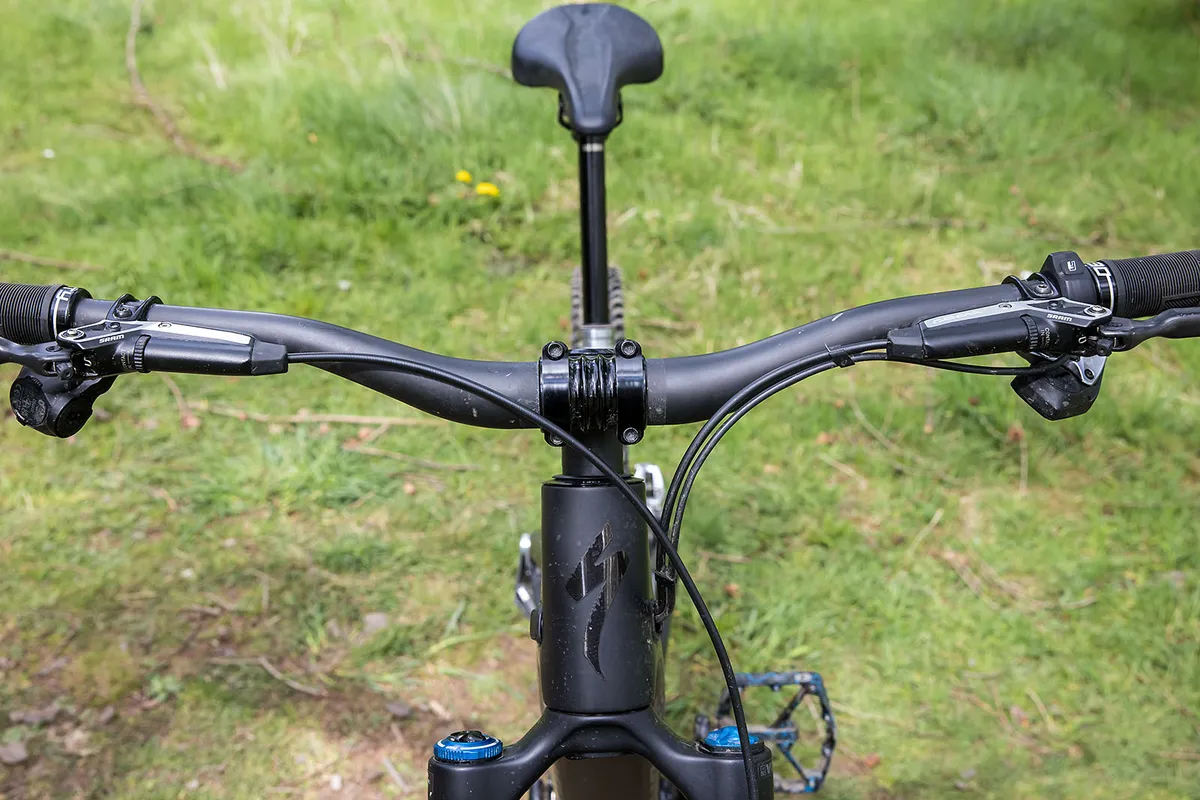
On a full charge using exclusively Eco, I managed 1,545m of ascent, covering 29.7km over 2 hours 50 minutes before the motor cut out with 6 per cent battery remaining.
However, this is less than Specialized’s claims of 2,300m of ascent, between 45 and 55km distance, and 3 hours 30 minutes to 4 hours 30 minutes of ride time.
Once the motor had cut out, there was little to no perceptible drag on climbs. With no assistance, the Levo SL II pedals akin to a weighty enduro bike, and its 32t chainring and 52t cassette provide a familiar gear ratio.
Specialized S-Works Turbo Levo SL II descending performance
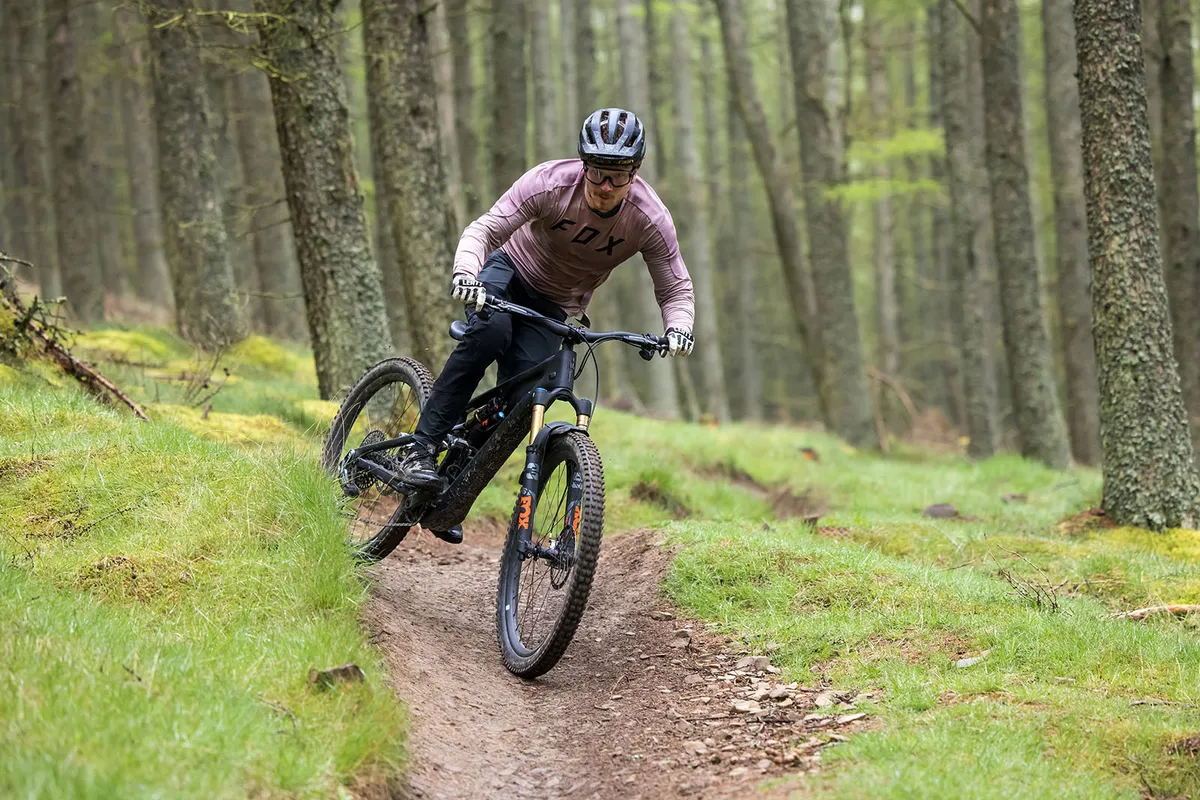
Dominating its feel on the descents is that same balance found when climbing, except it’s produced by the relationship between your hands and feet, along with its wheelbase, head angle and chainstays.
The bar and bottom bracket heights are well-proportioned, creating the feeling of being in, rather than on, the bike; its front end is neither too high nor too low.
It’s incredibly comfortable to jump on and ride quickly. You don’t need to adapt your riding style to the bike or compensate for any geometry irregularities with weight changes.
This neutrality improves overall control and makes it easy to hit technical sections of trail with confidence and speed.
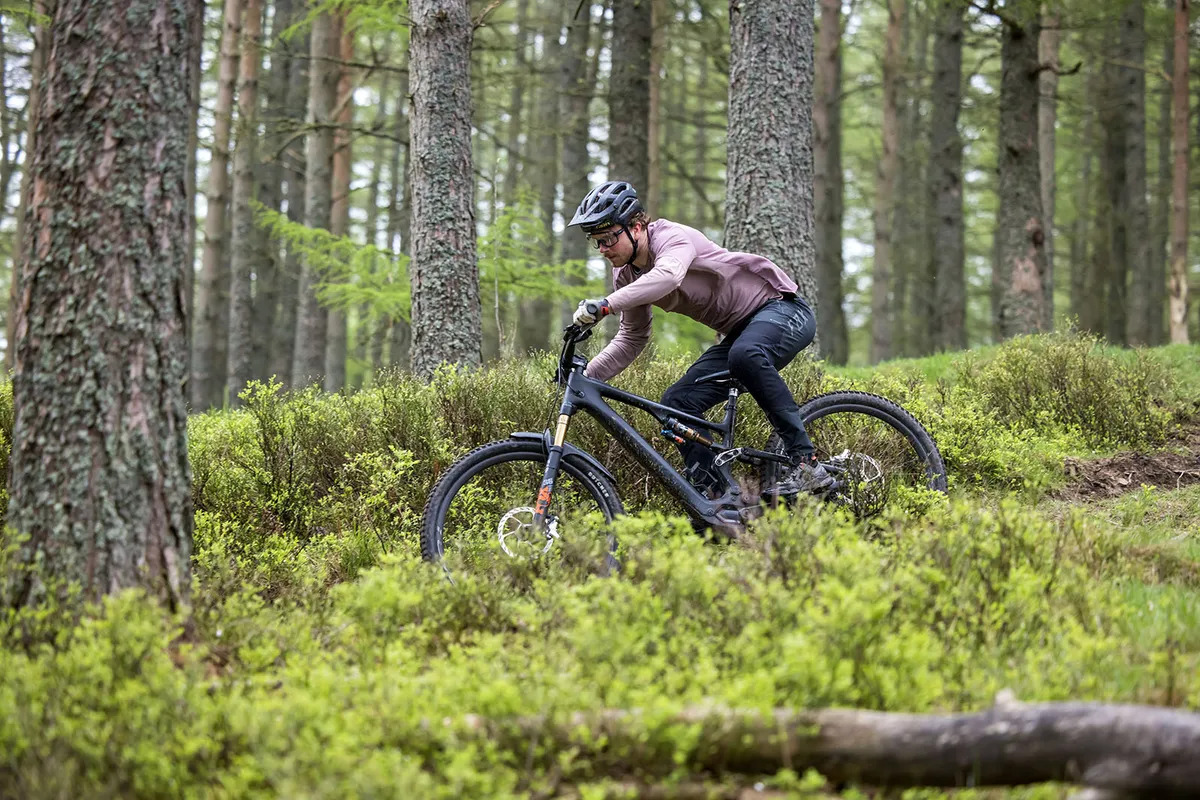
The unbiased front-to-rear weight distribution defies expectations of the mixed-wheel setup, where traction needs to be broken deliberately rather than continually managed.
This theme continues on choppy terrain.
Its frame and components combine in a seriously damped and luxuriously plush feel, but its balance also amplifies its insulating sensation on the roughest trails.
It works hard to flatten chunky undulations, and the bars and bottom bracket remain relatively level with the horizon.
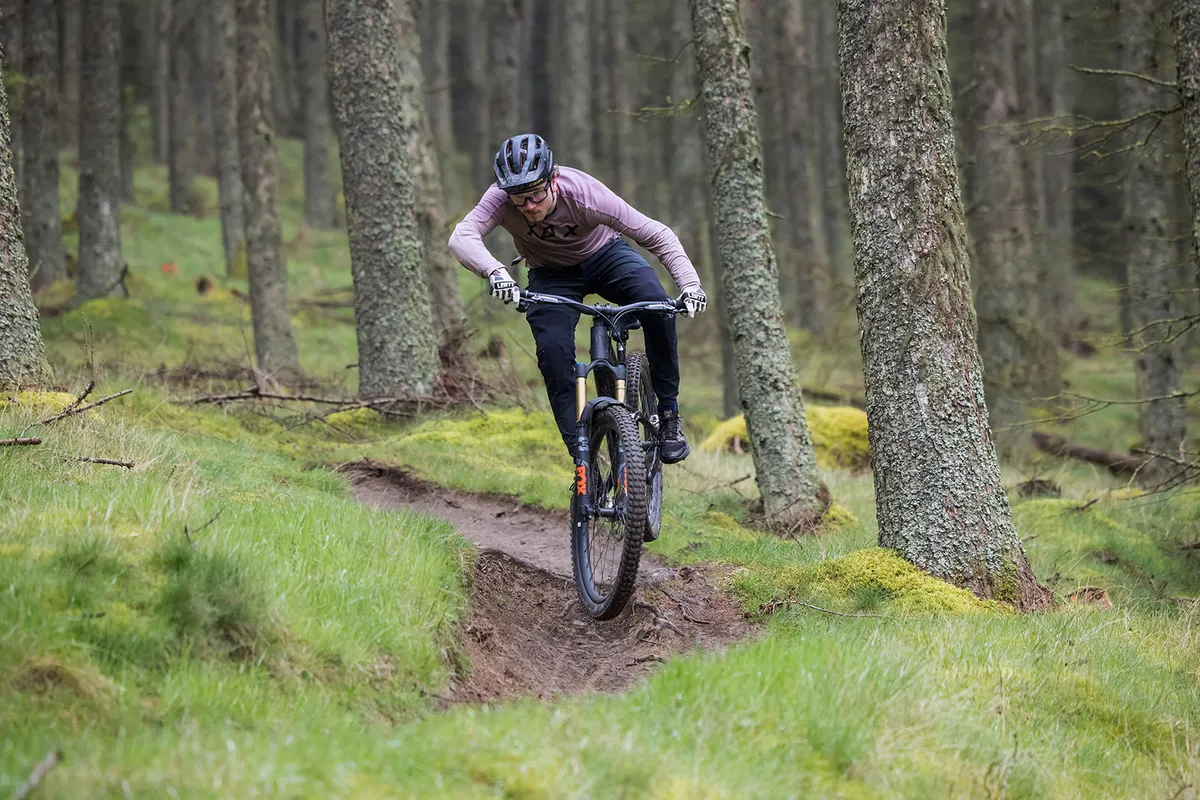
Cornering feels amazing, too. Leaning over doesn’t require huge amounts of rider input, and it sticks turn radii confidently and predictably.
The front and rear suspension compress into their solid mid-stroke evenly and sit there, providing grip and stability. Minimal weight adjustments are needed to keep it sat in a turn.
That damped quality in rough ground helps drive grip in the turns; no elastic-like twangs can be felt from the chassis, instead it moulds to the terrain at command.
Despite running the rear shock quite stiff, its comfort is impressive. Small bumps are absorbed well, providing plenty of grip.
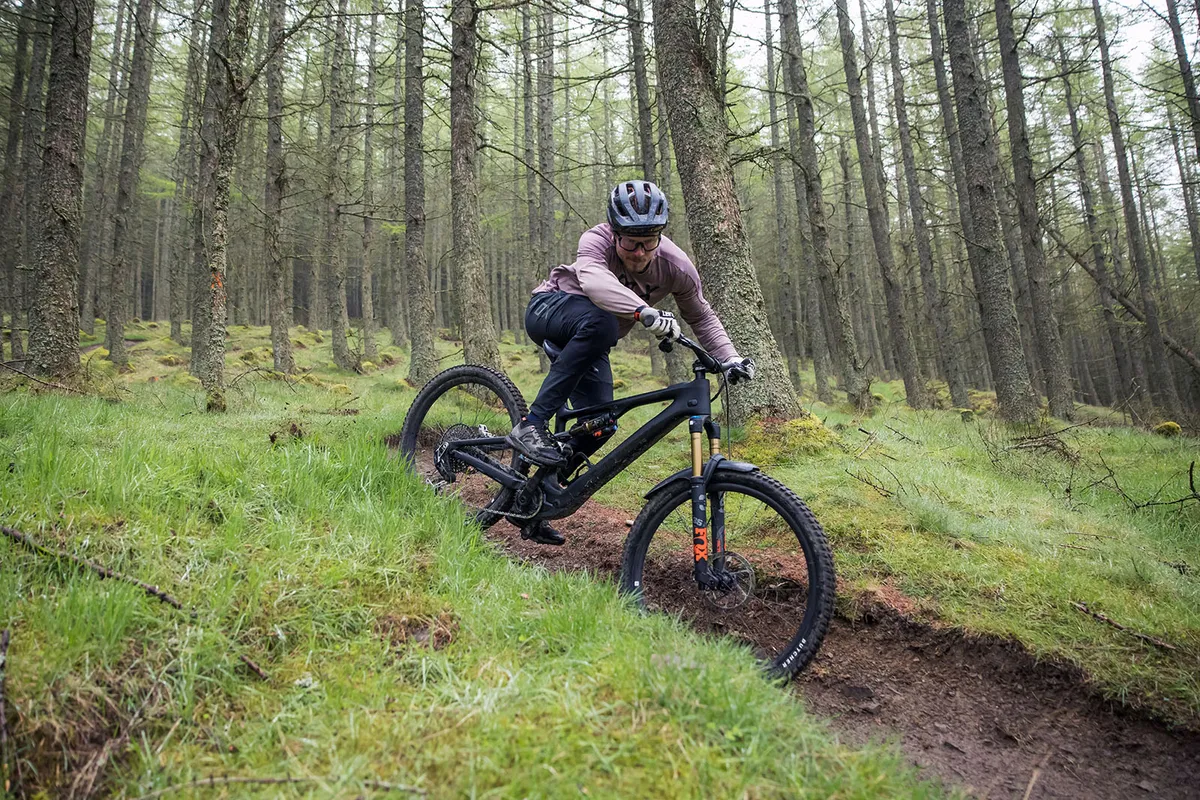
There’s loads of mid-stroke support – despite Specialized’s claims of a less progressive kinematic – helping provide plenty of pop and speed from pumping flatter sections.
Bottom-out resistance is impressive, with only the biggest, harshest compressions using up all of its travel.
I wouldn’t run it any softer, however, especially given the frame’s performance and how capable it is in gnarly terrain.
Increasing the number of volume-reducer spacers would permit a softer setup, but the end-stroke ramp-up can be harsh and quick compared to relying on the suspension’s kinematics. This sportier setup, however, appeared to have no downsides.
Unsuitable stock tyres
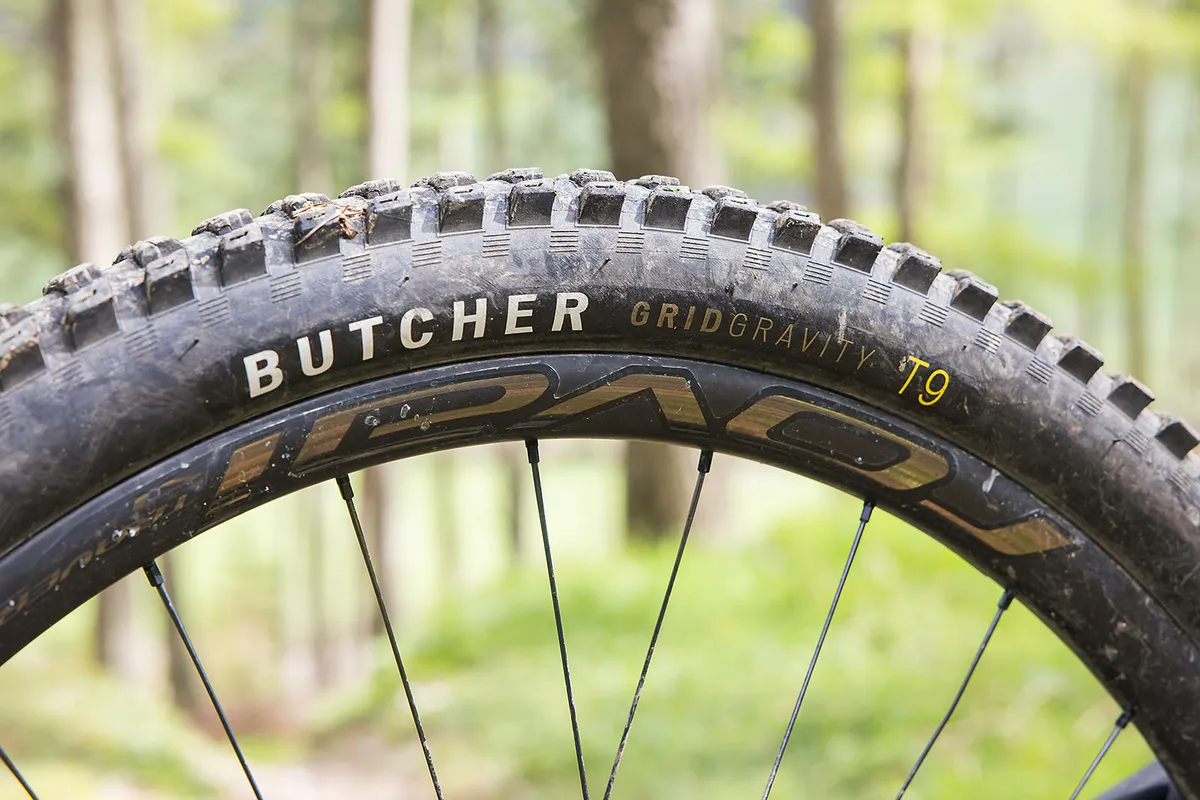
For many, especially those who ride less extreme trails or aren’t as heavy or aggressive, puncturing the rear GRID Trail casing tyre won’t be an issue.
But for a lot of other riders, the stock rear tyre will be a continual bone of contention, especially given the Levo SL II’s mega performance potential.
The lightweight casing deforms easily and offers limited protection against rips or pinch flats on rough terrain. On my first ride, I irreparably damaged the rear tyre.
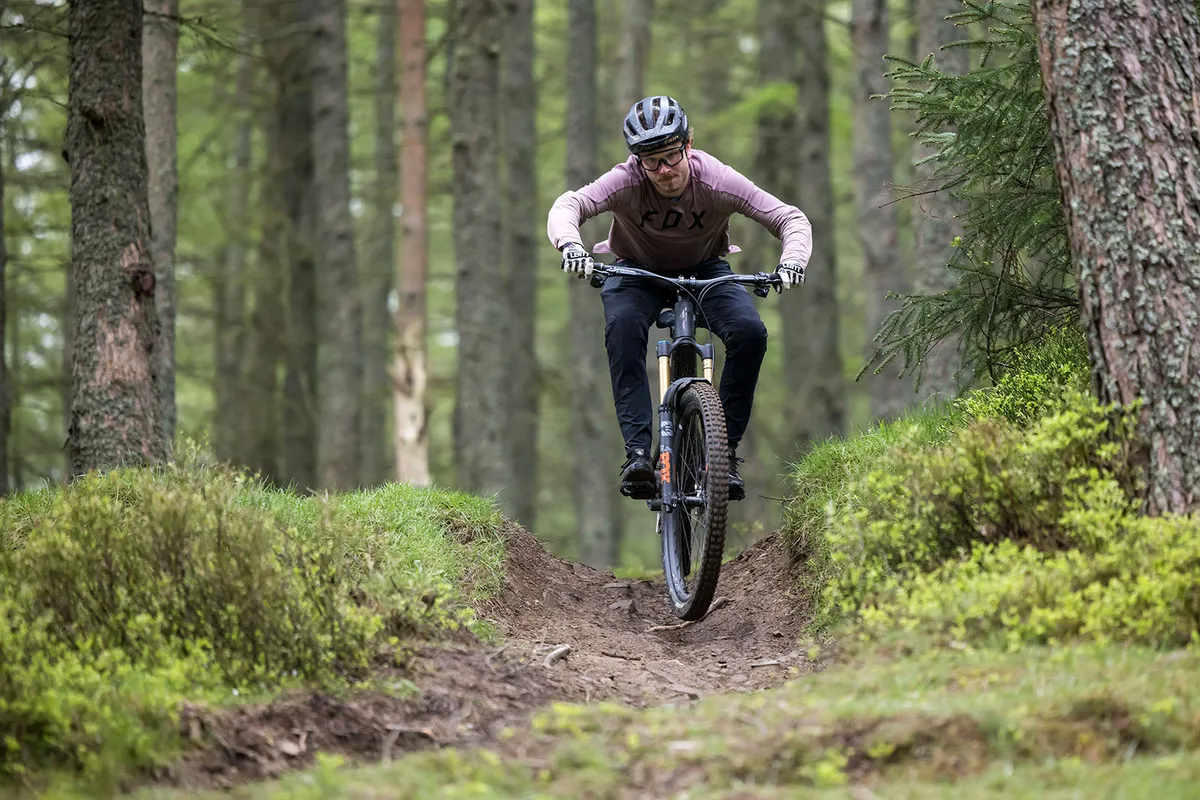
Upgrading to a GRID Gravity casing model would add a relatively insignificant 340g to the bike’s weight, but would match its outright performance potential.
Given the bike’s cost, we’re hopeful your local Specialized dealer would make this much-needed upgrade for you.
How does the Specialized S-Works Turbo Levo SL II feel with a 29in back wheel?
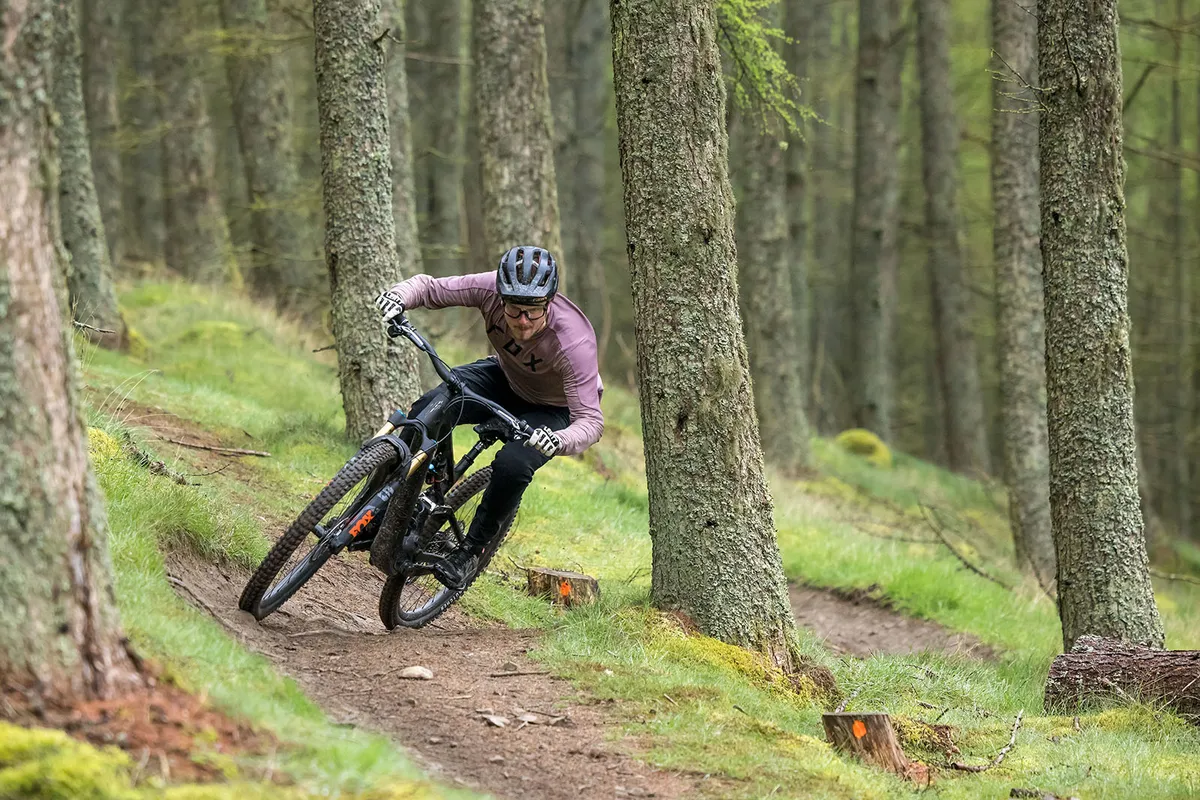
More is more, right?
In this case, the 29in back wheel improved some things but negatively impacted others.
While most of that magical balance and intuitive ride I fell in love with is retained, it raised the rear end a little too much for my tastes.
On the climbs, it's an improvement, steepening the seat tube angle. It increased grip and smoothed out the trails more thanks to the 29in’s improved bump roll-over.
Downhill, it’s the same story. The longer chainstay position increases stability, while the bigger wheel improves grip and slows down the handling.
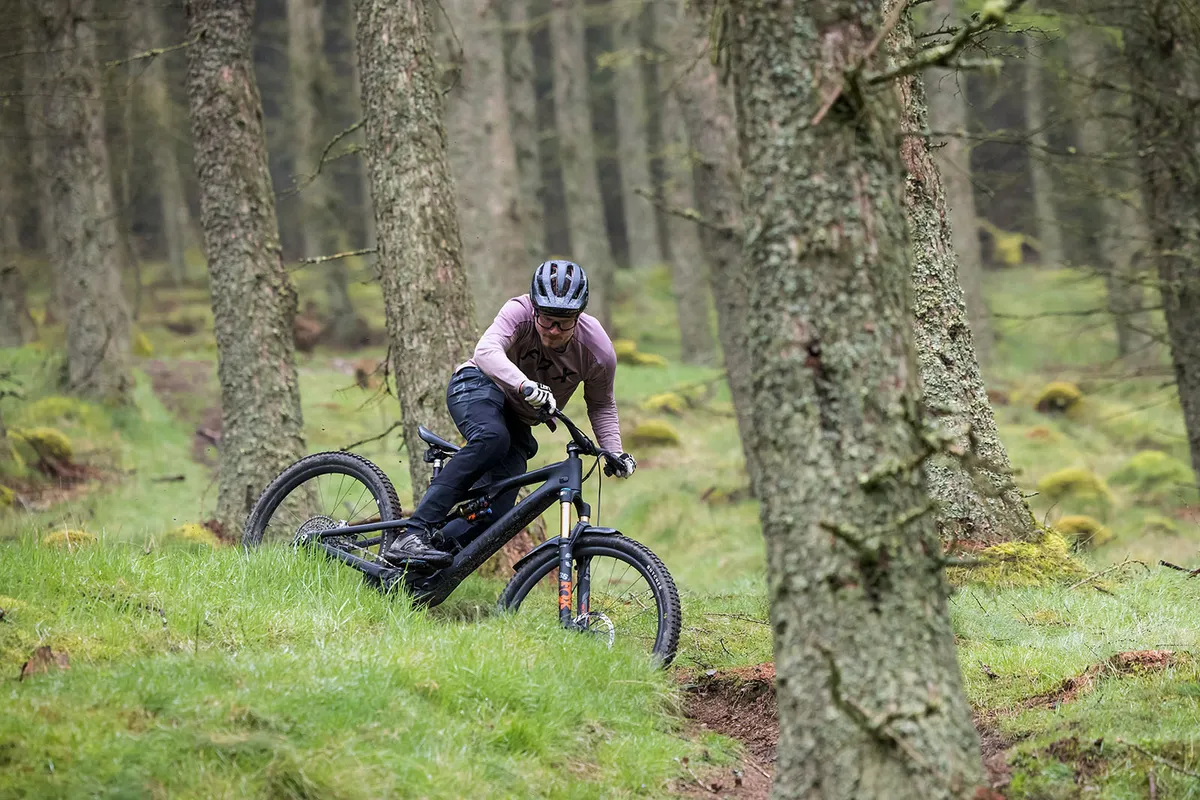
However, the increased bottom bracket height (328mm 27.5in to 344mm 29in) was noticeable. While not significant, it impacted the bike’s balance marginally, negatively affecting cornering performance and agility.
If you’re set on a 29in back wheel, you may want to run more sag and a larger volume-reducer spacer to lower the dynamic bottom bracket height while retaining bottom-out resistance.
For trail-focused riding, the 29in back wheel revealed no disadvantages over the stock mixed-wheel setup. When riding gnarlier trails with plenty of turns, I preferred the smaller 27.5in rear wheel with the chainstay set to the 29in wheel position.
How does the Specialized S-Works Turbo Levo SL II compare to the Focus JAM2 SL 9.9?
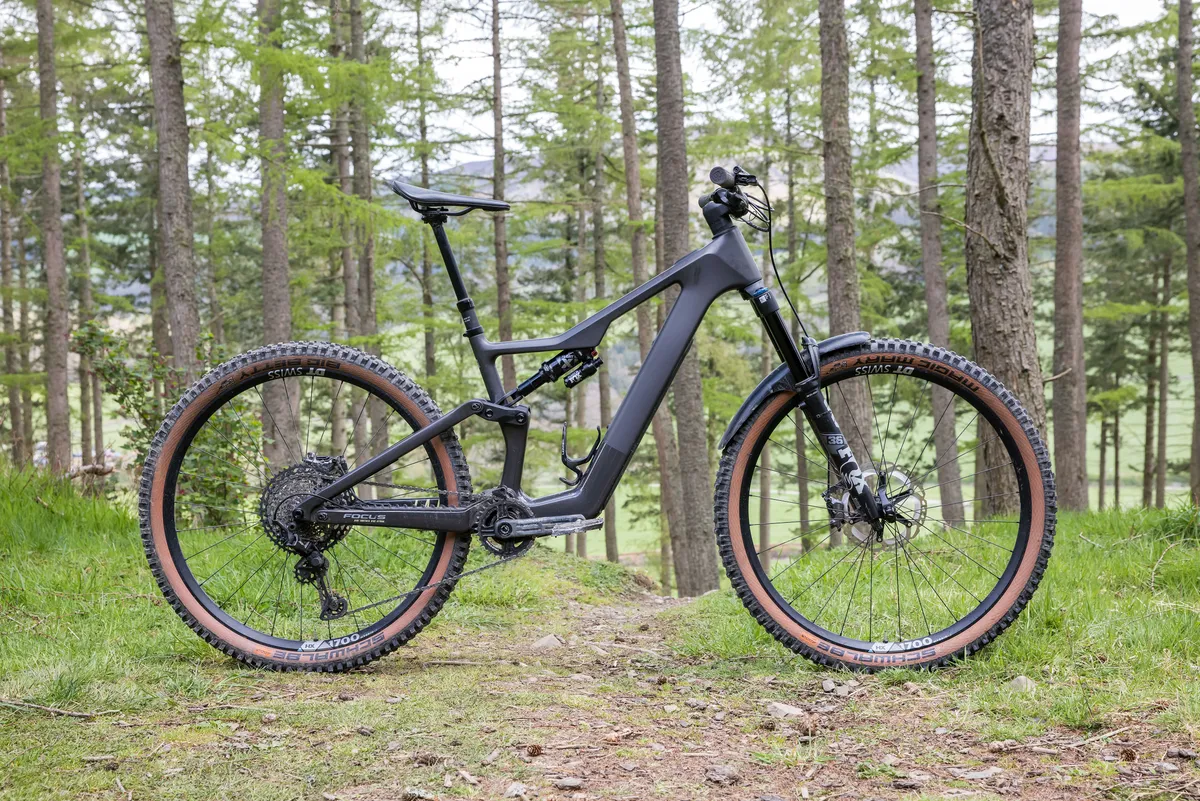
Sharing travel figures front and rear and trail-focused go-anywhere intentions, the Focus JAM2 and Levo SL II are obvious competitors.
Dig a little deeper and there are more similarities. Both offer vastly adjustable geometry, each getting chainstay length, bottom bracket height and head angle alterations that work independently.
Throughout the adjustment range, their figures are similar too.
This customisable nature stretches their performance potential from chilled-out trail to gnarly enduro riding. Fortunately, both have the suspension performance to match their potential.
Rear tyre choice is lacklustre on both bikes, but the Focus front rubber’s weedy carcass really isn’t fit for purpose either, especially compared to the Levo SL’s chunkier Butcher.
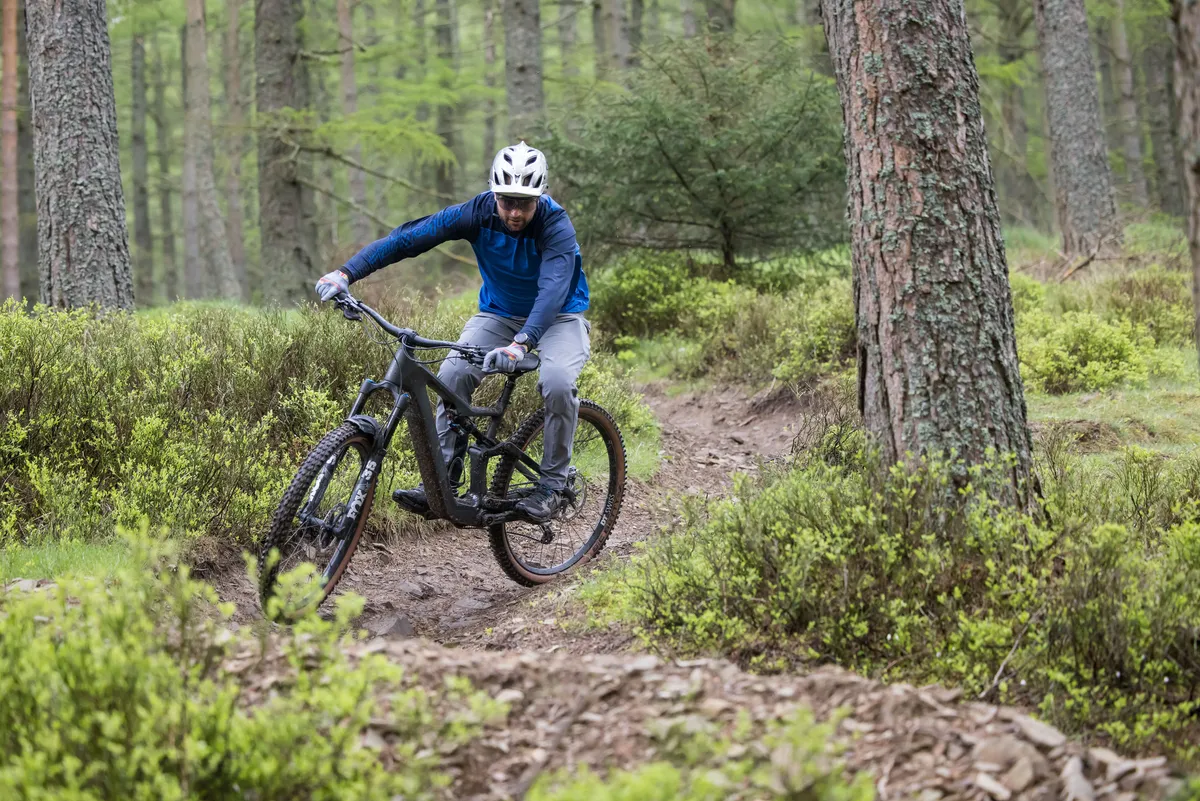
The Focus weighs 19.18kg, 1.49kg heavier than the Specialized. You pay for that difference though, with the Jam2 SL 9.9 retailing for £7,499 against the Levo SL II’s £13,000.
The Levo SL II is adorned with better components for that significant price gap, but is the difference in performance worth £5,501? Arguably, no.
Battery life is significantly better on the Fazua Ride 60-powered Focus. Over 2,500m of ascent is easily attainable on a single charge using the economical Breeze mode.
The Fazua’s battery is bigger (430Wh), but the motor is more frugal, and more powerful in the higher assistance modes than the Levo’s.
Fazua’s motor is also quieter, but the Turbo SL 1.2’s controls and interface are much more refined and the customisable display oozes quality.
Overall, the battery life, motor power, geometry adjustment and general value for money swing the needle marginally in favour of the Focus JAM2 SL 9.9.
Specialized S-Works Turbo Levo SL II bottom line
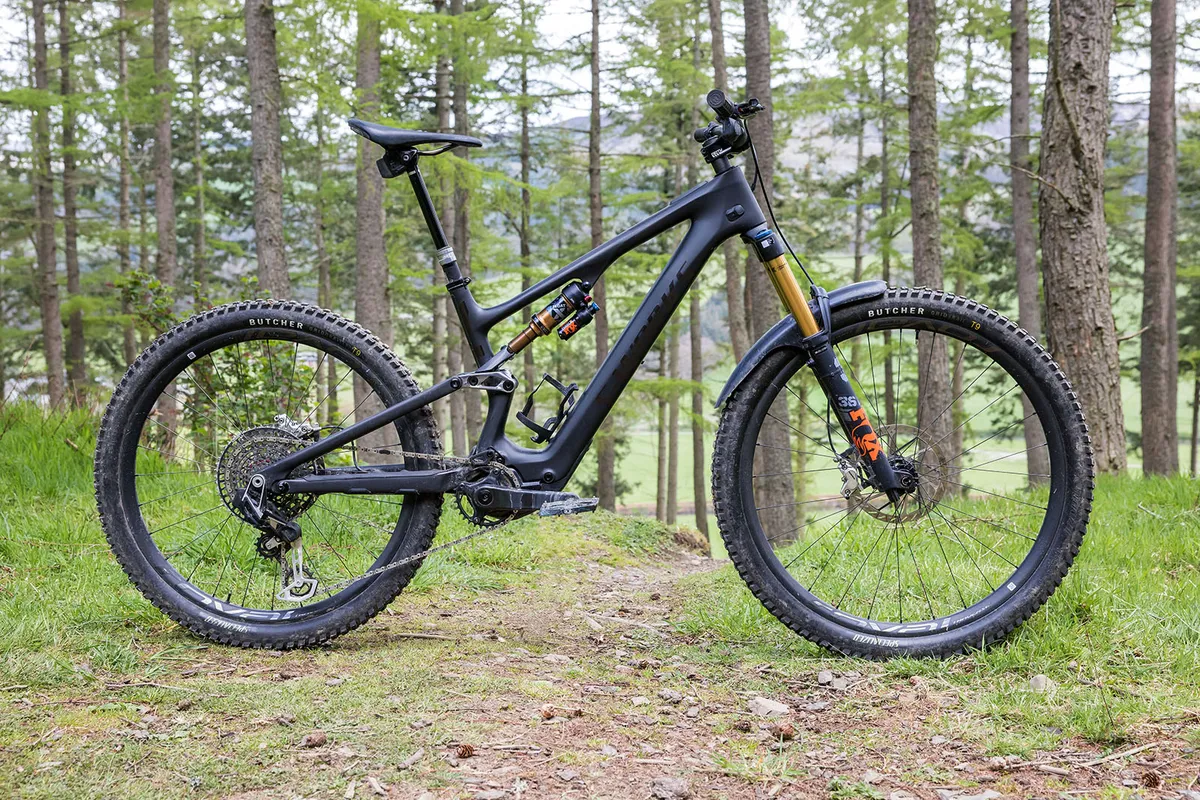
Once again, Specialized has hit a home run with the Levo SL II.
Welcome updates bring it in line with the rest of the brand’s trail bike range, offering geometry adjustments and capabilities that mimic the Stumpjumper Evo it’s based on.
Comfortable everywhere, on all types of terrain, it’s most impressive when the going gets tough, thanks to otherworldly amounts of control and serenity.
The Levo SL II is an absolute masterpiece at pace.
SL ebikes | How we tested
With their jack-of-all-trades attitude, SL ebikes have to perform well everywhere, so we were looking for adaptability, range and power out on the trails.
Senior technical editor Alex took to his local runs in Scotland’s Tweed Valley to push them to their limits, finding out which ingredients make the perfect lightweight eMTB.
Bikes tested
- Focus JAM2 SL 9.9
- Forestal Cyon Neon
- Haibike Lyke CF 11
- Specialized S-Works Turbo Levo SL II
Product
| Brand | specialized |
| Price | 13000.00 GBP |
| Weight | 17.6900, KILOGRAM (S4) - |
Features
| Fork | Fox 36 Float Factory, 160mm travel |
| br_stem | Deity, 50mm |
| br_chain | SRAM XX Eagle Transmission |
| br_frame | Fact 11m carbon fibre, 150mm travel |
| br_motor | Specialized Turbo SL 1.2 motor, 360Wh battery, TCU MasterMind display, handlebar remote |
| Tyres | Specialized Butcher GRID Trail Gripton T9 29x2.3in f, Specialized Eliminator GRID Trail Gripton T7 29x2.4in r |
| br_brakes | SRAM Code Ultimate Stealth, 203/203mm HS2 rotors |
| br_cranks | SRAM XX, 32t |
| br_saddle | Specialized Bridge |
| br_wheels | Roval Traverse SL (29in front, 27.5in rear) on Roval Traverse SL hubs |
| br_headset | Specialized angle adjust |
| br_shifter | SRAM AXS Pod Controller |
| br_cassette | SRAM XX Eagle Transmission 10-52t |
| br_seatpost | RockShox Reverb AXS (dropper) |
| br_gripsTape | Deity Knuckleduster |
| br_handlebar | Roval Traverse SL Carbon, 780mm |
| br_rearShock | Fox Float X Factory |
| br_availableSizes | S1, S2, S3, S4, S5, S6 |
| br_rearDerailleur | SRAM XX Eagle Transmission (1x12) |
